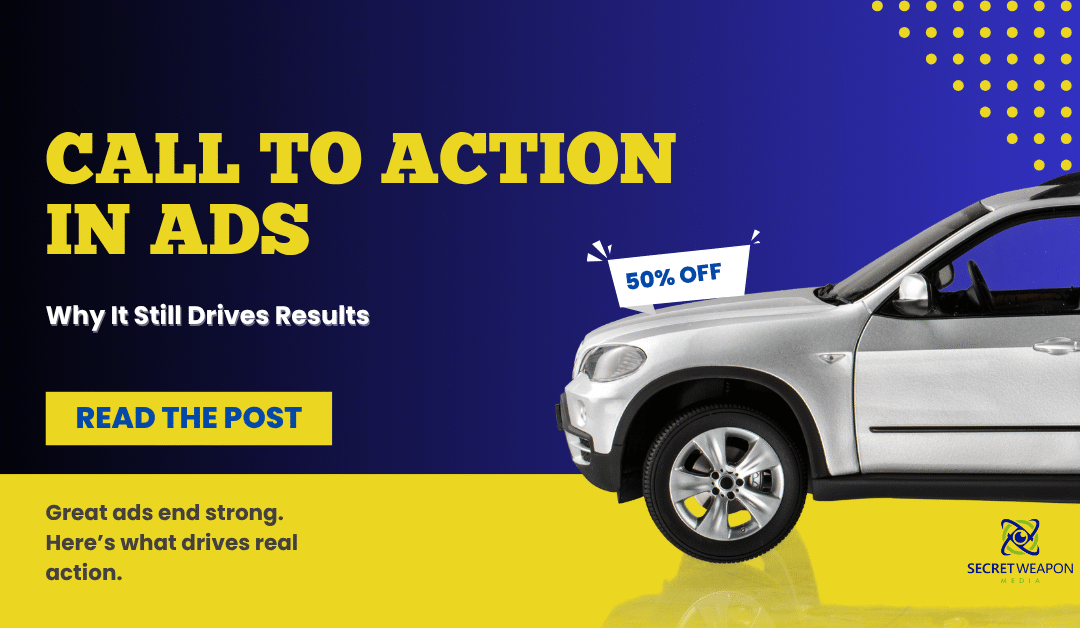Why Does a Call-to-Action Matter So Much?
With people seeing up to 10,000 ads per day, how do you make yours stand out? If you’ve been following our What Makes a Great Ad? series, this is the fourth and final piece in our proven framework: the call-to-action (CTA).
Ironically, it’s often the first thing businesses focus on—because they want a quick response. They want a prospect to see the ad and immediately take action.
But that doesn’t always happen.
Why Most CTAs Fall Flat
A lot of CTAs fail because they’re not built around what the customer values. Think about it:
-
Is a “Huge Sale” really enough to make someone drop everything?
-
Is a “Limited-Time Offer” worth driving across town for?
-
Is “Free with Purchase” actually enticing—or just filler?
If your call-to-action doesn’t feel valuable to your audience, they won’t act. It’s that simple.
What makes a call to action in ads actually work?
In our most recent Lunch & Learn, we walked through several exercises that challenged attendees to flex their marketing muscles and think differently about their offers.
Here’s what we know:
A strong CTA needs to create urgency and clarity. Psychology tells us that loss aversion is one of the most powerful motivators. People are more likely to act when they feel they might miss out.
So how do you tap into that?
You make your offer clear, concrete, and compelling. Like:
“Buy the XYZ Triple Platinum Whatz-it by Friday and get a brand-new smart TV.”
—or—
“Call today and claim your $500 voucher toward the XYZ Whatz-it.”
Each of these includes a deadline, an action, and a reward—all spelled out.
But Here’s the Catch…
The offer has to be real—and worth it.
Today’s consumers are tired of clickbait and gimmicks. If your CTA overpromises or underdelivers, it’ll backfire. And in a world of online reviews and social media watchdogs, a disappointed customer can do real damage.
Bottom line: if you make an offer, your business needs to be 100% ready to deliver on it.
Where You Place Your CTA Matters, Too
Not all media are created equal. Statista regularly surveys U.S. consumers on how much they trust ads across different platforms—TV, radio, print, digital, and social. And year after year, broadcast TV remains one of the most trusted.
That’s why companies like Google, eBay, Etsy, and even Facebook have all advertised on major TV networks. They’re not doing it for fun—they’re borrowing the platform’s credibility.
If your ad runs on a platform your audience already trusts, it’s much easier to get them to act. You’re not just selling a product—you’re transferring trust.
Wrap-Up: The Final Piece of the Puzzle
If you want your ad to convert, the CTA isn’t optional—it’s essential. Without a strong call to action in ads, even the best creative can fall flat.
This wraps up our 4-part framework for high-performing ads:
- The Emotional Hook
- The Unique Value Proposition
- One Clear Theme
- A Strong Call-to-Action
When these four elements work together, your ads become more than just noise—they become catalysts for real business growth.
Want help crafting ads that get results?
Download our free resource, The Field Guide to Information Warfare, and get smarter strategies for sharper messaging.

